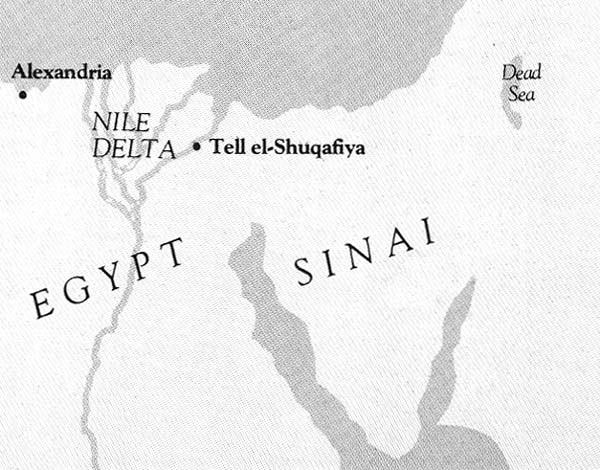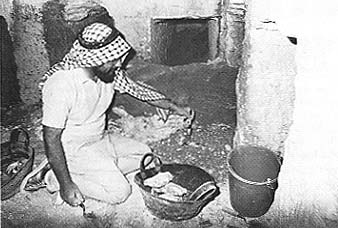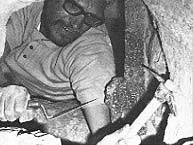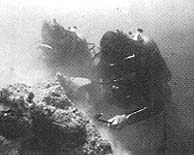Excavation Opportunities 1982
049


Diving to recover Herodian columns from Caesarea’s harbor, breaking ground at a new dig in Jordan, restoring a Middle Bronze (22nd–16th century B.C.) “mansion” in the Sharon Plain—these are a few of the excavation opportunities for volunteers in 1982.
A dig provides the chance to live with other volunteers from many parts of the world and perhaps to discover an inscribed sherd, a rare musical instrument, or a common cooking pot that seems so special when it’s found in your digging area. You will also discover muscles you may not have challenged and what it’s like to awake and work before dawn. Although most digs set 18 as a minimum age for volunteers, as Professor Ken Holum, area supervisor at Caesarea, stresses, “There is no maximum. We’ve had very fine excavators who are in their 60’s and 70’s.”
The digs are as diverse as the nationalities and ages of their volunteers. Minimum stay, academic credit, location, costs and accommodations are all variables to be considered. Write for more information to the representatives of digs that complement your own hopes and expectations. You may decide to join the scores of BAR readers who, in summers past, have volunteered for the adventure of hands-on archaeology.

050
City of David
The City of David excavations on the original site of Jerusalem are co-sponsored by the Hebrew University of Jerusalem and the Israel Exploration Society. The best-known and most controversial excavations in Israel, the City of David project has brought major structures to light, including a unique 50-foot high stepped structure and the reopened Warren’s Shaft. (For a full report on the City of David excavations in 1979 and 1980, see “Digging in the City of David,” BAR 05:04, as well as “Jerusalem’s Water Supply During Siege: The Rediscovery of Warren’s Shaft,” BAR 07:04, and “New York Times Misrepresents Major Jerusalem Discovery,” BAR 07:04.)
For the fifth season, July 5–August 27, 1982, the project is recruiting 120 volunteers world-wide. Volunteers will work a minimum of two, preferably three, weeks. Academic credit is available through Hebrew University’s Overseas Students program. Volunteers must arrange their own accommodations in Jerusalem (with help, if necessary, from the project). Thus, the only fees charged to volunteers are $15 for applications and registrations and tuition for any academic credit. For information and applications, write to Dr. Yigal Shiloh, Director, The City of David Archaeological Project, Institute of Archaeology, Hebrew University of Jerusalem, Jerusalem, Israel.
Emeq Hefer

Tel el Efshar, a site on the northern bank of the Alexander River in the Sharon Plain, and Michmoret, a port at the river mouth on the Mediterranean Coast north of Netanya, will be excavated by the State University of New York at Buffalo in cooperation with Rockland Community College, The Center for Study in Israel, Rutgers University and the Emeq Hefer Archaeological Research Fund. Only a few miles from Caesarea, the Emeq Hefer Excavations at Efshar have yielded a Canaanite center and an Israelite settlement. The latter is identified as the chief city of one of Solomon’s administrative districts, the “Land of Hefer.” Many discoveries have come to light, including a well-preserved “mansion” of the Middle Bronze Period, the courtyard of a large, Late Bronze Period house, and a Byzantine building with a flagstone-paved courtyard. This building was constructed on late Roman remains and contained evidence of the Samaritan revolt (fifth century A.D.). Michmoret, the seaside port, shows evidence of occupation from at least the Persian to the Ottoman periods. It will be excavated this season to complement finds from Efshar and to document further the human habitation of the Hefer Valley and its seafront.
The project, in the field from June 28 to August 8, 1982, has both a volunteer and a summer school program. Volunteer costs will not exceed $13 a day. The field school will offer two courses, each carrying five graduate/undergraduate or variable independent study credits. Housing in a school building, board, and touring related to the seven-week program is $700 for students taking courses.
For further information including minimum length of stay and tuition fees, write to Dr. Samuel M. Paley; c/o Council of International Studies; 414 Capen Hall, Amherst Campus, SUNY at Buffalo; Buffalo, New York 14260.
Tell el-Shuqafiya
The second season of excavations at Tell el-Shuqafiya in Egypt’s northeast delta will begin August 25 and continue to October 31, 1982. Amphori, jar stamps, coins, and bronze and ceramic figurines found during the 1981 season attest to the great promise of this site in terms of the late Ptolemaic (first century BC) through the late Roman (fourth century AD) periods.
Ancient land and sea trade routes from Syro-Palestine and Saudi Arabia converged at Shuqafiya on the way to Alexandria, the doorway to the western world. In 1900, the longest Nabataean inscription yet known in Egypt was found at Shuqafiya, linking the site with the Nabataeans, one of the great commercial empires of the Near East. The 1982 excavations will pursue the Nabataean connection, along with seeking prehistoric, Pharaonic, and other finds through the late Roman period.
Volunteer participation will be by application only and for the entire season. Camp fee of $1,000 includes tent accommodation, board, and medical expenses. Field school subjects include photography, surveying, lab 051processing and recording. Up to 12 hours of academic credit are available through the excavation’s sponsor, the University of Utah. Write for application to Dr. Philip Hammond, Director, Shuqafiya Expedition, Department of Anthropology, University of Utah, Salt Lake City, Utah 84112.
Timnah
Samson’s struggles against the Philistines began near Biblical Timnah, known today as Tel Batash. The 10-acre mound rises 30 to 40 feet above the Sorek Valley, about 10 miles from Jerusalem. Never disturbed either by post-Biblical settlement or agricultural work, Timnah is an ideal site for initiates in archaeological training. Middle Bronze to Persian period finds of past seasons include cylinder seals, scarabs, figurines, and imported Cypriot and Mycenaean pottery.
Volunteers must participate in the full season, June 29 to August 1, 1982, under the direction of Dr. George Kelm and Dr. Amihai Mazar. An optional extended program from June 19 to August 1, 1982 includes travel and sightseeing in Cairo and Israel. Southwestern Baptist Theological Seminary sponsors the expedition in collaboration with The Hebrew University of Jerusalem. Six hours of graduate/undergraduate credit are available; tuition cost is $100.
The expedition is housed at a first-class hotel in the cool Judean Hills. For more information, write: Dr. George Kelm, Timnah Expedition; P.O. Box 22417; Fort Worth, TX 76122–0417. Phone: (817) 923–1921.

Aphek/Antipatris
Biblical Aphek, located near the source of the Yarkon River, was a major city on the ancient Via Maris. Herod rebuilt the city in the first century A.D. and named it Antipatris. The excavations at Aphek/Antipatris are sponsored by a consortium of universities, which includes Tel Aviv, Cornell, and North Carolina, as well as Allegheny College.
Two three-week sessions, beginning June 20 and July 12, are open to volunteers who are at least 18 years old, healthy, and fully insured. Participation without academic credit must be for a minimum two-week stay; three to six weeks are preferred. Accommodations in tents or barracks cost $75 per week. (No extra charge for the international atmosphere.)
Several three-week courses are offered, with tuition of $100 per course. Groups and institutions may apply for special rates and arrangements for credit and non-credit participation.
Write for details to Dr. Donald Hobson, U. S. Project Coordinator; Box 14, Allegheny College; Meadville, Pennsylvania 16335. Phone: (814) 724–2368.
Tell Yarmuth
Tell Yarmuth in the hills of the Shephelah, about 19 miles west of Jerusalem, is one of the largest Early Bronze Age (fourth to third millennium B.C.) sites in Israel. The tell is comprised of an acropolis and a lower city. The lower city was abandoned in the second half of the third millennium B.C. and only partially reoccupied in later periods. However, the acropolis was occupied continually until the Byzantine period (324–640 A.D.). Finds from the first two excavation seasons include a public building of the Early Bronze III Period (2650–2350 B.C.), an impressive fortification system 121 feet (37 meters) thick, and a gate of monumental proportion with preserved walls up to 16.5 feet (5 meters) in height.
Directed by Dr. Pierre de Miroschedji, Tell Yarmuth excavations are co-sponsored by the French Center for Prehistoric Research of Jerusalem and Hebrew University’s Institute of Archaeology. The 1982 season will include three sessions: July 5–17, July 19–31 and August 2–13. Volunteer minimum age is 18 and minimum stay will be one session. Participants will experience every 052phase of field and lab work. Accommodations at the French Center’s “House of Emmaus,” about 12.5 miles from both Jerusalem and Tell Yarmuth, will cost roughly $75 per week. For further information and application, write to Tell Yarmuth Archaeological Expedition, French Center for Prehistoric Research; P.O. Box 547; Jerusalem, Israel.
Tell Jalul
New excavations at Tell Jalul, the largest tell in central Jordan, will draw on staff experience gained at Tell Heshbon between 1968 and 1978. Heshbon’s director, Lawrence Geraty, will head the Jalul project, seeking occupational remains from the Bronze and Iron Ages.
Volunteers may stay for either or both of two four-week sessions: June 16–July 14, 1982, and July 14–August 11, 1982. A $1,799 fee includes all travel, international and internal, 12 quarter hours of graduate or undergraduate credit through Andrews University, room, board, tool kit, dig T-shirt, textbooks, and weekend trips for the full eight weeks. A $999 fee includes internal travel, six hours of credit and the remainder of the above for either four-week session. There is no discount for those who do not want academic credit. Accommodations will be in a school house in the town of Madaba four miles away, with bus transportation daily to the site.
For application forms, write to Michael Blaine, The Madaba Plains Project, P.O. Box 1110; Glendale, California 91209.
Akko (Tel Fukhar)
Professor Moshe Dothan of Haifa University will direct a two-month excavation season beginning July 1 at Akko (Tel Fukhar) on the Mediterranean coast. One significant find, a Phoenician ostracon, suggests the presence of a sanctuary nearby. The 1982 expedition hopes to uncover this sanctuary from the Persian Period (6th–4th century B.C.) as well as major Middle Bronze Age (22nd–16th century B.C.) fortifications and industrial ruins.
Volunteers may arrive at any time during the season and are expected to stay at least two weeks. Academic credit is available through Elizabethtown College. For further information and application, write or call Professor Austin Ritterspach; Elizabethtown College; Elizabethtown, Pennsylvania 17022. Phone (717) 367–1151.
Tel Gerisa
The second season at Tel Gerisa begins July 1 and continues to August 27, 1982. A massive 15-acre site on the bank of the Yarkon River near the Tel Aviv suburb of Ramat Gan, Tel Gerisa was occupied during the Philistine and Israelite periods, as well as during the Bronze Age.
James Muhly (University of Pennsylvania), Ze’ev Herzog and Anson Rainey (Tel Aviv University), Geoffery Cowling (Macquarle University, Australia) are among the veteran expedition directors. The 1982 dig anticipates identifying Gerisa with Biblical Gath-rimmon, a priestly city in the territory of the tribe of Dan. Environmental research in geology, flora and fauna, will be coordinated with traditional archaeological investigations.
There are two four-week sessions: July 1–30, 1982 and August 1–27, 1982. All volunteers must arrive at the start of a session and stay at least one week. Four academic credits are available through Tel Aviv University. Tuition for credit is $425, with a minimum four-week stay. Auditor’s fee is $325 for four weeks and will be prorated for a shorter stay. Junior staff members may take a two-credit graduate level course. For details and application write to Frederic R. Brandfon, 5224 Rexford Road, Philadelphia, Pennsylvania 19131.
Tel Dor
Excavations at Tel Dor on the Mediterranean Coast 18 miles south of Haifa will begin on June 28 and continue to August 13, 1982. During the first two seasons, substantial Byzantine, Roman, Hellenistic and Persian remains were unearthed, including the city wall, gates and other major structures. Plans for the third season in 1982 include expanded excavations in the Phoenician and Iron Age occupations, as well as new digging in the center of the city. The excavation is open to anyone with an interest in archaeology. Members of the excavation will participate in all phases of the archaeological project. There will be lectures on various topics by staff members including dig director Dr. Ephraim Stern of the Institute of Archaeology, Hebrew University.
Academic credit may be arranged. Volunteers desiring academic credit should write either to Professor Lawrence Schiffman; New York University, Washington Square; New York, NY 10012, or to Professor Howard P. Goldfried; California State University, Sacramento, 6000 J Street; Sacramento, CA 95819. Volunteers not desiring credit and those interested in 053credit through Hebrew University may write to RICHDOR, Dr. Neil Richardson, Executive Director, 168 Mt. Vernon Street; Newtonville, MA 02160.
Yoqne’am
Fertile farmlands of the Jezreel Valley are the geographic and agricultural center of modern Israel. In Biblical times, these quiet fields saw battle—by Barak and Deborah, Gideon, Saul and Jonathan.
Today, the ambitious Yoqne’am Regional Project conducts a study of about 100 square miles of this rich archaeological area. The project includes a survey of the Western Jezreel Valley, directed by Dr. Yuval Portugali, and excavations at Tel Yoqne’am (Iron Age) and Tel Qashish (Late and Middle Bronze Ages), directed by Professor Amnon Ben-Tor. (For more background, see “The Regional Study—A New Approach to Archaeological Investigation,” BAR 06:02.)
The 1982 season, July 4–August 6, 1982, seeks volunteers willing to stay a minimum of two weeks. For information on participation and on academic credit through Hebrew University, write to Professor Amnon Ben-Tor, Institute of Archaeology, Hebrew University; Jerusalem, Israel.
Caesarea
The Joint Expedition
At a site on the Mediterranean coast between Tel Aviv and Haifa, where no port had ever been built, Herod the Great constructed a harbor and a city named Caesarea. Major Herodian finds of the past ten excavation seasons include defense walls, storage vaults, warehouses, and a 54-foot-wide, 1/3 mile long cardo or main thoroughfare, with mosaic pavement borders running its full length. The 1982 team of 180 volunteers and staff will continue excavation of these structures, and will look for the city plan and for Strato’s Tower, a landmark mentioned by the first-century historian, Josephus Flavius. All participants will have the opportunity to go on archaeological tours in northern and southern Israel and to hear evening lectures by noted archaeologists.
Volunteers may participate in either or both of two five-week sessions: May 29–July 1, 1982 and July 3–August 5, 1982. Room and board costs at a nearby seaside guest house for one session, five days each week, are $900. Up to six hours of graduate/undergraduate credit are available. For details and application, write to Professor Robert Bull, The Institute for Archaeological Research, Drew University, Madison, New Jersey 07940.
Caesarea
Ancient Harbour Excavation Project

Underwater excavating, an exciting new component of archaeological research, is in progress at Caesarea. If you’re a certified diver, you may apply to the Caesarea Ancient Harbour Excavation Project, sponsored by Haifa University’s Center for Maritime Studies. There will be two excavation sessions in 1982: May 23–June 11 and June 13–July 2. A third session is tentatively scheduled for August 29–September 17.
Volunteers will participate in a series of lectures and discussions on topics such as underwater photography and comparative ancient harbor sites. An optional four-day diving trip to the Red Sea is included.
Costs range from a minimum of $900 for each three-week session to a $2,500–$3,000 plan which includes all travel, international and internal, tuition (optional, three units), board and accommodations. For details write: Prof. Robert Hohlfelder, Campus Box 234, University of Colorado, Boulder, Colorado 80309. Phone (303) 492–8431.
Tel Dan
“The Remarkable Discoveries at Tel Dan,” BAR 07:05, described two 20-foot high mudbrick towers joined by an intact mudbrick arch, all completely preserved. This 3,800-year-old gateway was discovered during the 1979 season at Tel Dan, a 50-acre mound in northern Israel.
The ninth season at Tel Dan, called Laish in the Bible, will begin June 12, 1982 and continue to July 23, 1982. Six academic credits are available. For more information, write to Dean Paul Steinberg, Hebrew Union College/Jewish Institute of Religion, One West 4th Street, New York, New York 10012. Phone: (202) (674–5300)
Diving to recover Herodian columns from Caesarea’s harbor, breaking ground at a new dig in Jordan, restoring a Middle Bronze (22nd–16th century B.C.) “mansion” in the Sharon Plain—these are a few of the excavation opportunities for volunteers in 1982. A dig provides the chance to live with other volunteers from many parts of the world and perhaps to discover an inscribed sherd, a rare musical instrument, or a common cooking pot that seems so special when it’s found in your digging area. You will also discover muscles you may not have challenged and what it’s like to awake and […]
You have already read your free article for this month. Please join the BAS Library or become an All Access member of BAS to gain full access to this article and so much more.
Already a library member? Log in here.
Institution user? Log in with your IP address or Username
